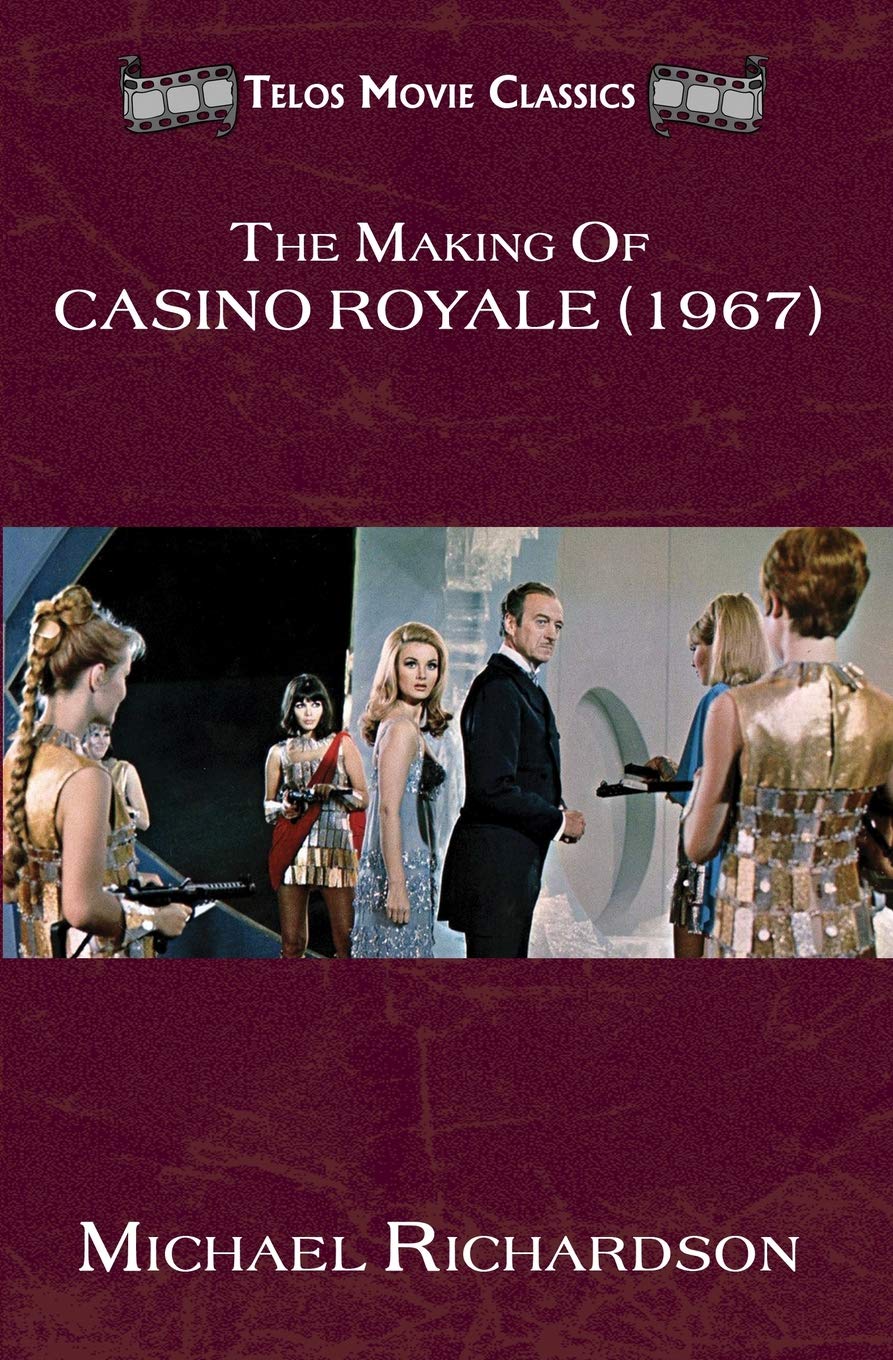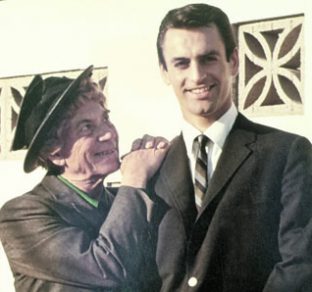Part One –
-A quick look at the John Gardner era 
“I’m always conscious when I’m doing Bond that he is not mine. I have to keep a slight distance from him because he is somebody else’s creation, and not my own.”
– John Gardner interviewed in Bondage Magazine # 14
There has been renewed interest lately in the John Gardner era of James Bond books, and I thought I would throw my two pence in – not in a podcast, but via this blog.
John Gardner was born in Northumberland, England, on the 20th of November, 1926. He attended Cambridge University and was a member of the Royal Marines. After leaving the service, he eventually became a journalist and critic. His first novel, “The Liquidator” was published in 1964 and introduced the character of Boysie Oakes. It was adapted in a film in 1965, starring Rod Taylor as Boysie and Jill St. John.
The seventies found him resurrecting Sherlock Holmes’ nemesis, Professor Moriarty, for two novels known as the Moriarty Journals. Finally, in the eighties, he was commissioned by Glidrose – holders of the James Bond copyright (later changed to Ian Fleming Publications) – to begin a new book series featuring 007.
Gardner updated Bond, aging him slightly from his mid – thirties to his early forties, and featured more realistic and political stories. The first of Gardner’s Bond novels, “Licence Renewed”, was an immediate success; Gardner subsequently gave us a new Bond novel per year (except for 1985 ) until 1994.
His 1995 offering was the film novelization of “Goldeneye”. He penned only one more original Bond novel – “Cold”, which was published in 1996. This last book could almost be considered two short novellas, as it is divided into two parts, each taking place years apart, with a brief chapter detailing the years between.
After the publication of “Cold” Gardner “retired” from the series in 1996 and later replaced by Raymond Benson. Gardner would die on the third of August, 2007.
The Chronology:
- c. 1978
The “Double O” section is abolished during the “so – called Realignment Purge”. It is renamed the Special Section, with Bond as its sole member. This most likely took place during the time of Prime Minister James Callaghan. His Labour Party received a vote of no confidence in the House of Commons in March of 1979 after months of Labour unrest in the United Kingdom. He was replaced in the following election by Margaret Thatcher.
License Renewed (1981)
- June 12th to June 27th, 1981
Chronological Remarks: The clincher for 1981 is the mention of the Festival of St. John taking place on a Wednesday. St. John the Baptists’ feast day is June 24th, which was a Wednesday in 1981.
My rating: Classic
Quotes and comments:
…M. grunted that Whitehall had taken on the wrong man while he was still in charge. “As far as I’m concerned, 007, you will remain 007. I shall take full responsibility for you; and you will, as ever, accept orders and assignments only from me. There are moments when this country needs a trouble-shooter – a blunt instrument – and by heaven it’s going to have one. They can issue their bumf and abolish the Double – O section. We can simply change its name. It will now be the Special Section, and you are it. Understand, 007?”
The first of many changes in the department Bond works for, but by no means the least or the last… This scene with M. represents the first instance of Gardner having part of a story take place years before the main action.
The rating is because this is Gardner’s first Bond book. The story is above average otherwise.
- Fall, 1981
Bond participates in the clean – up of Operation Creamcake.
- March to June, 1982
Bond helps in training and other activities in the Falkland Islands.
For Special Services (1982)
- Summer / Fall 1982
Chronological Remarks:
A difficult book to chronologize, as there are no real clues in the book to go by . Takes place after the events of License Renewed, and there is talk of “last January”. Most likely takes place in the late Summer / Early Fall. We do know that it is not during the months of May or June, as (according to Icebreaker) there is mention of Bond participating in the Falklands War (April to June 14th, 1982 – according to Win, Lose, or Die he may in fact have been there before April).
Cedar Leiter is in her early twenties, and yet Bond says he is “nearly old enough” to be her father (try adding about 10 years, Mr. Bond.)! Cedar must have been born around 1958 or 1959. This would make her around twenty-three for the events of the novel. This is also the first instance in the Gardner novels where Bond has to fight his way out of a building – in this case an elevator that has been booby – trapped.
My rating – above average
Quotes and comments
Her large brown eyes did not waver as they met Bond’s gaze. There was something familiar about the eyes; as though he had seen, or met the girl before “Come in, 007,” M. was saying, his voice edgy. “I don’t think you’ve ever met this lady, but she’s the daughter of an old friend of yours. Commander James Bond…Miss Cedar Leiter.”
***
A single card, handwritten with great care. It read: “To James Bond: The gift of a daughter – or whatever you want her to be.”
Felix Leiter makes an all too brief appearance in this book. While Felix as aged – as witnessed by a daughter in her early twenties, Bond has not. This is arguably Gardner’s best book in the series, certainly one of my favorites.
It is of some interest to see the return of S.P.E.C.T.R.E.. Gardner will use this organization in three of his works to limited success.
The rating is justified; Felix, His daughter, Blofeld, and the return of SPECTRE. Interesting Plot. Good show!
- November, 1982
Bond recieves a substanial “legacy” from a heretofore unknown Uncle Bruce Bond. So much for “no relatives living” in 1962!
Icebreaker (1983)
- January 12th to January 22nd, 1983
Chronological Remarks:
Bond comes into it on Wednesday, January 12th of 1983, although the book itself begins a year earlier. Bond has just completed two weeks in the Artic Circle, first with a Driving course and then eleven days on “Artic Survival Maneuvers”. He is on his way back to London, stopping over in Helsinki when the novel begins. Later that week, Bond flies to Finland on a Saturday from Madeira, Portugal, arriving early Sunday morning. He goes that night back to Paula Vackers’ apartment. It is still Sunday, almost midnight. After searching it, Bond makes his way back to his car and then leaves the city. Once out of the City, it is stated that there was no moon. This must be January 16th / 17th or Jan 23rd / 24th.
The moon on January 23 / 24 did not set until 2:18 am Helsinki time and was 63% full. This leaves January 16th / 17th. The moon, only 4% full that day, had set at 6:08 p.m. on the 16th, justifying the statement of no moon that night. The novel ends with the villain’s death ten days after it begins, on Saturday, January 22nd.
Bond will be in hospital for two weeks, and then gets two months leave for his work.
My rating – Average
Quotes and comments
He woke around dawn, then drifted to sleep again. This time, as always when content, he dreamed of Royale – les – Eaux, as it had been long ago.
A nice bit at the very end of the book. Although the weakest of Gardners’ early Bond novels, it has two of Gardners’ favorite devices that he will use time and again:
- At least one of the chapters takes place at least a year before the rest of the book.
- There is a double cross – usually someone Bond thinks is a friend is in actually his enemy (Gardner started using this trick in “For Special Services” ).
The rating is because of the overuse of the “who is on who’s side” syndrome. It may be a good spy novel, but not so much a good James Bond spy novel.
To Be Continued….



 I suppose, in the end, this book is really for the James Bond film fan.For those who don’t want to slog (and yes, sometimes it feels like a slog), may I recommend, for most likely less than the price of the this book, you purchase the collector’s edition of the movie? The film contains not only an audio commentary from Jay Rubin, author of “The James Bond Films”, but also a featurette on – you guessed it – The Making of Casino Royale.
I suppose, in the end, this book is really for the James Bond film fan.For those who don’t want to slog (and yes, sometimes it feels like a slog), may I recommend, for most likely less than the price of the this book, you purchase the collector’s edition of the movie? The film contains not only an audio commentary from Jay Rubin, author of “The James Bond Films”, but also a featurette on – you guessed it – The Making of Casino Royale.






